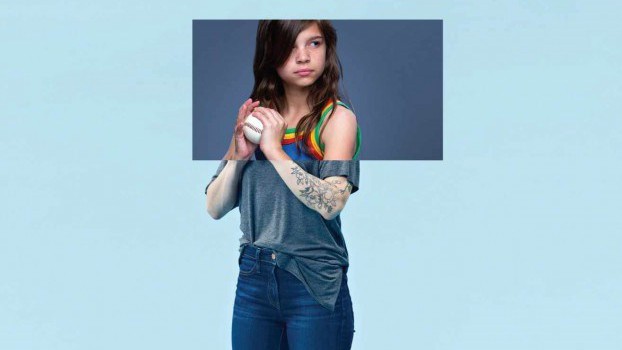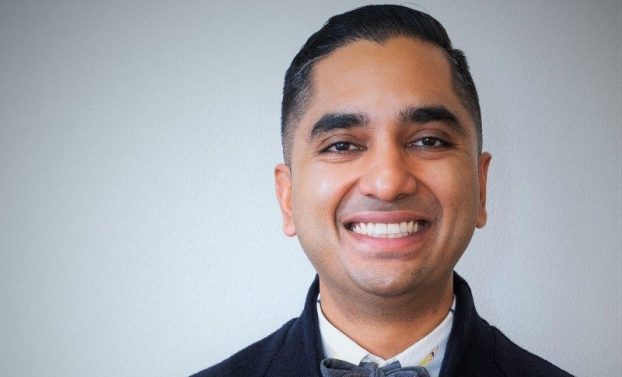Tony Matta takes Frito Lay into new chip territory.
Every Tuesday at Frito Lay Canada is agency day. Everyone blocks off their calendars in the afternoon for the agencies to come in to present ideas and meet with the brand teams. Overseeing all 14 brands is Tony Matta, VP marketing, whose remit includes Lay’s, Ruffles, Miss Vickie’s and SunChips, to name a few. He boils down his role to one of barrier removal – developing relationships with agencies and weeding out anything in the process that may get in the way of creating the best possible marketing campaigns.
This year’s efforts include a highly successful user-generated campaign and several brand re-stages, all resulting in 12% growth for the company, so it seems he has fulfilled his role of instigating and abetting groundbreaking work.
Matta says that when the year began, there were two main goals for the marketing department. The first was to respond to trends in the marketplace. This meant just-in-time marketing – using social media and creating a dialogue with consumers. The second was to focus on big ideas. “Forget about technology for a second; the world of big ideas is the same world it’s always been,” Matta explains. “If you can create something that’s a big enough story, people are going to want to have a conversation about it regardless of how you put it into market.” These two goals were ultimately achieved in one big campaign: Doritos “Guru.”
“It was an iterative campaign,” Matta says of “Guru.” “It wasn’t something that we developed in February and set it off to sail. We developed it over a number of months and put it into market, and it had several phases where consumers were actually impacting what was going to happen next…So instead of putting the ship off to sail, they’re on the ship.”
By now, most people in the industry know the “Guru” story: with the goal of reaching millennials, Canadians were invited to enter the “Become the Doritos Guru” contest by naming a new flavour and creating a 30-second spot to promote it. To widen the reach beyond TV and social media efforts to promote the contest, the chips were sold in plain white bags, effectively capturing Doritos fans’ attention everywhere. After over 2,000 submissions, 8.5 million page views and 589,000 votes, the winner was announced on MuchMusic’s MuchOnDemand on May 1. The winning group, whose flavour was called Scream Cheese, received $25,000 and an unprecedented 1% of the product’s net sales. With 22% brand growth, you might say the campaign was a screaming success.
Matta likens the “Guru” campaign process to a Japanese keiretsu – a powerful alliance of organizations that included Microsoft and Xbox, MuchMusic and MusiquePlus, and online partners like YouTube, Facebook and Têtes à claques.
“It wasn’t just writing cheques to execute media, it was truly [about allowing] everyone to play in the sandbox,” says Matta, “and the interesting thing was, if you look at the creative work that came out of ‘Guru,’ some of it we didn’t develop. Some of it was developed by what would traditionally be called media partners – channels of communication [that] loved the idea. They saw a benefit of being associated with the idea and they wanted to contribute to the creative.”
A slew of agency partners were also involved, including Frito Lay Canada AOR BBDO, Proximity, Capital C, OMD and Fleishman-Hillard.
“Tony is clear in what he’s looking for and gives us good direction,” says Tim Welsh, VP group account director, BBDO, “but he’s also trying to engender collaboration amongst all the agency partners.”
For Matta, this meant having the agencies be accountable to each other: “you could turn to the PR person and say ‘are you happy with that media plan?’ If you were a media person, is that something you would hold up and say, ‘I’m proud of this?’ If no, then why are we talking about it?” Having all the agency partners stepping into each other’s shoes was crucial to the success of “Guru.”
“We all end up working smarter because we all know what our task is,” says Jon Webber, ACD at Proximity Canada. “The goal is to make everybody’s work look better and not just be a bunch of separate elements from a bunch of separate agencies.”
Aside from social media and consumer dialogue, another trend Frito Lay has responded to this year is consumers’ health and wellness concerns, with two brand re-stages: Lay’s and Tostitos.

On the Lay’s side, the insight was that consumers want to know where their food comes from. “It originated from consumers saying, ‘don’t confuse me with all the functional benefits of your products. I want to go back to a simpler definition of health and wellness,’” explains Matta.
The idea was simplicity. Enter the tagline “Simply made. Simply good” and creative that included radio and TV spots with fictional spokesfarmer Joe Oulton. “We wanted to talk about the potato with the voice of a farmer but we didn’t want to take ourselves too seriously, and we didn’t want to make it too complex,” says Matta. “Hence Joe – simple guy, obsessed with potatoes…and it’s not meant to be knee-slapping funny, it’s just meant to put a smile on your face.”
Sodium levels have also been a hot topic this year, much like trans fats were a few years ago, and Matta says it was important for Frito Lay to lead the way in sodium reduction: “Our approach with trans fats was, we’re not going to wait for government to set the standards, we’re going to be first. Sodium was the same approach.”
“He has the right blend of tactical skills, what is required from a leader in our business to build plans that will help us deliver the next quarter,” says Marc Guay, president of PepsiCo Foods Canada, which includes the Frito Lay Canada and Quaker Foods and Snacks businesses. “But at the same time he’s very focused on building a long-term sustainable business, building brand equity and thinking about demographic trends to stay relevant with an evolving population over the long term.”
So Frito Lay offered low-sodium Lay’s (with 50% less than the original), as well as low-sodium Tostitos and unsalted Miss Vickie’s, and eventually the program was extended to all Lay’s flavours, reducing sodium by a minimum of 25%. To communicate the reduction, Matta and his team focused on moms – the gatekeepers of the family diet. Moms were targeted through print and online as well as PR. Overall, this year’s Lay’s efforts resulted in 19% growth compared to a year ago.
The Tostitos re-staging centered around the fact that it’s now made with 100% whole grains, complete with an endorsement from the American non-profit consumer advocacy group the Whole Grains Council. Matta describes the communications as a traditional campaign centered around TV with print, in-store and online activity. “Traditional is not a bad word,” he says, explaining that a “Guru”-style program isn’t always the best way to get the word out. “It’s a traditional campaign about taking something relevant to the consumers in an efficient and engaging way.” And sales are up 8% over last year.
Of course, these are only a few of the activities that Matta oversaw this year. And he promises big things for 2010 that will go beyond “Guru” and raise the stakes, taking Frito Lay into unchartered territory yet again.
“Tony never wants to stand still,” says Proximity’s Webber. “We know he wants new, bigger and better things and it’s inspiring because we know he’s going to trust us when we bring it to him, that it’s not going to fall by the wayside, that he genuinely wants to do engaging, creative new work that nobody’s ever seen before.”
Matta says that now that the doors of dialogue have been opened with consumers, there’s no going back. “I think the conversation was always there to be had, technology has simply enabled it,” he says. “And great marketing is about reflecting society, so you can’t ignore that. You either decide you’re going to be part of that world and help shape it or you’re going to be left in the dust.”
Vital stats
Marketing team size: 30
Years at Frito Lay: eight in February
First job in marketing: assistant brand manager on laundry and cleaning for P&G
Prior posting: in 2006 went to the U.K. for a year and a half to run Frito Lay’s Walkers business before returning to Canada to assume his current role
Professional highlights of the past year: “Bringing marketing to life with other functions internally – working with all functions of the business to realize what the power of marketing and focus on the consumer can mean to their particular discipline. Also, bringing marketing to life for our retail customers – leveraging our brands and big ideas that consumers care about to help retailers achieve their objectives”
Marketing style: Passion, leadership and always looking for that “wow” factor
Then and now
Where were you in 1989?
Third-year undergrad at McMaster University.
What made you get into marketing?
Change. Marketing is about reinvention. You have to have that foundation and consistency, but at some point, at some level, you have to be reinventing.
What’s the biggest difference between marketing then and now?
Consumer expectations are much higher that they used to be. Why? Because we live in an on-demand world. Consumers today have been trained to expect instant gratification. If I want a book, I can, in 20 seconds, get on my Blackberry and buy a book and I can get reminded every time that author releases a new book. Then you add how many more brands and messaging and media there are out there, and it’s a much more complicated landscape to work in. You’ve got to meet extremely high expectations, and you’ve got to do it in a way that you get noticed.
Jump to:
Overall winner – Loblaw’s Craig Hutchison: Back to the future
Finalist – Nissan Canada’s Jeff Parent: No guts, no glory
Finalist – Canadian Tourism Commission’s Greg Klassen: Canada’s tourism superhero






















